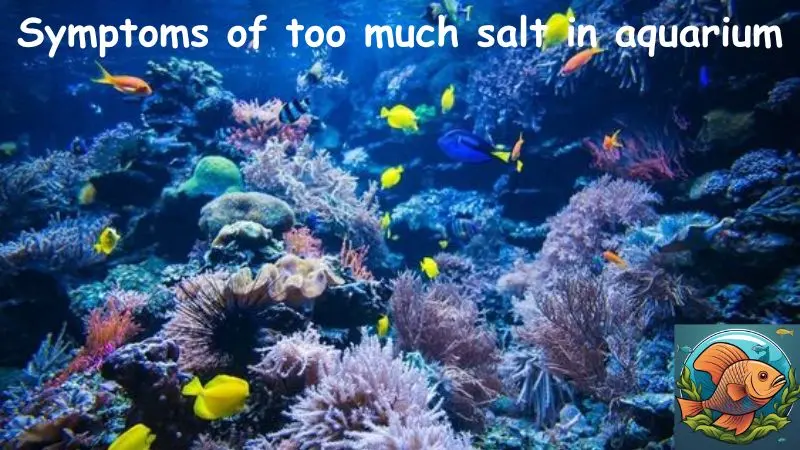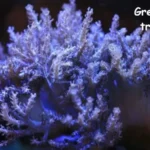marine life blog
Symptoms of too much salt in aquarium
The allure of a thriving marine aquarium, teeming with vibrant corals, graceful fish, and intricate invertebrates, is undeniable. However, maintaining this delicate ecosystem requires meticulous attention to detail, particularly when it comes to salinity levels.
While salt is essential for the survival of marine life, an excess can be detrimental, leading to a cascade of adverse effects that can silently undermine the health of your aquarium. Recognizing the symptoms of too much salt in aquarium is crucial for early intervention and preventing irreversible damage. Let’s explore this issue further with fishtankmagic.com in the article below!
Understanding Salinity and its Importance
Salinity, the measure of dissolved salts in water, is a fundamental parameter in marine environments. It influences the osmotic balance of aquatic organisms, dictating the movement of water and dissolved substances across their cell membranes. Marine life has evolved to thrive within a specific salinity range, typically around 35 parts per thousand (ppt) for most saltwater aquariums.
The Consequences of Salinity Imbalances
Deviation from this optimal salinity range, whether too high or too low, can disrupt the delicate equilibrium within an aquarium. While low salinity can lead to osmotic stress and cellular swelling, high salinity poses a more significant threat, triggering a range of physiological and behavioral changes in marine organisms.
Symptoms of Too Much Salt in Aquarium
Recognizing the signs of excessive salinity is crucial for timely intervention. Here’s a comprehensive list of symptoms that can indicate high salt levels in your aquarium:
1. Behavioral Changes:
- Increased Respiration: Fish may exhibit rapid, labored breathing, gasping at the surface, or even leaping out of the water. This is a desperate attempt to obtain oxygen as high salinity reduces the oxygen-carrying capacity of the water.
- Lethargy and Loss of Appetite: Fish may become sluggish, inactive, and lose interest in food. This is a sign of stress and metabolic disruption caused by high salinity.
- Aggression and Territoriality: Increased aggression and territorial behavior can be observed, as fish struggle to cope with the stressful environment.
- Abnormal Swimming Patterns: Fish may exhibit erratic swimming patterns, such as circling, spinning, or bumping into objects. This indicates neurological dysfunction caused by salinity imbalances.
2. Physical Manifestations:
- Dehydration: Fish may appear shriveled or sunken-eyed, indicating dehydration due to the osmotic imbalance caused by high salinity.
- Skin and Gill Damage: High salinity can irritate and damage the delicate skin and gills of fish, leading to lesions, redness, and excessive mucus production.
- Coral Bleaching: Corals are highly sensitive to salinity fluctuations. Excessive salt can cause them to expel their symbiotic algae, resulting in bleaching and eventual death.
- Invertebrate Stress: Invertebrates, such as snails, crabs, and shrimp, are particularly susceptible to salinity imbalances. They may exhibit sluggish behavior, loss of appetite, and even mortality.
3. Water Quality Indicators:
- Increased Salinity Readings: The most direct indicator of high salinity is an elevated reading on your hydrometer or refractometer.
- Increased Water Density: High salinity increases the density of water, making it harder for fish to swim and potentially causing buoyancy issues.
- Reduced Water Clarity: High salinity can contribute to cloudiness in the water, as it promotes the growth of algae and bacteria.
Causes of High Salinity in Aquariums
Understanding the root cause of high salinity is essential for effective treatment. Common culprits include:
- Over-Salting: Accidental over-salting during water changes or initial setup is a frequent cause of high salinity.
- Evaporation: As water evaporates from the aquarium, the salt concentration increases. This is particularly problematic in open-top tanks or those with inadequate ventilation.
- Salt Creep: Salt creep occurs when salt crystals accumulate on the rim of the aquarium or other surfaces, eventually dissolving back into the water and increasing salinity.
- Improper Mixing: Improperly mixing salt with water can lead to localized areas of high salinity, especially if the salt is not fully dissolved.
- Use of Inappropriate Salt Mix: Using a salt mix with a higher concentration of salts than recommended can also contribute to high salinity.
Addressing High Salinity in Your Aquarium
Once you’ve identified the symptoms of high salinity, it’s crucial to take immediate action to correct the imbalance. Here’s a step-by-step approach:
- Identify the Cause: Carefully assess the potential causes of high salinity in your aquarium to address the underlying issue.
- Gradual Salinity Reduction: Avoid drastic changes in salinity, as this can be more detrimental than the high salinity itself. Gradually reduce the salinity by performing frequent water changes with fresh, low-salinity water.
- Water Testing: Regularly monitor the salinity levels using a hydrometer or refractometer to track the progress of salinity reduction.
- Address Evaporation: Ensure adequate ventilation and consider using a top-off system to replenish evaporated water without adding additional salt.
- Prevent Salt Creep: Regularly clean the rim of the aquarium and other surfaces to remove salt crystals and prevent salt creep.
- Proper Salt Mixing: Always thoroughly dissolve salt in a separate container before adding it to the aquarium.
- Use Appropriate Salt Mix: Choose a high-quality salt mix specifically formulated for marine aquariums and follow the manufacturer’s instructions.
- Observe and Monitor: Continuously monitor the behavior and physical condition of your fish and invertebrates throughout the salinity reduction process.
- Seek Professional Help: If you’re unsure about the cause or treatment of high salinity, consult a qualified marine aquarium specialist for guidance.
Conclusion
Maintaining the delicate balance of salinity in your marine aquarium is essential for the health and well-being of its inhabitants. Recognizing the symptoms of too much salt in aquarium is crucial for early intervention and preventing irreversible damage. By understanding the causes of high salinity, implementing appropriate corrective measures, and consistently monitoring water parameters, you can ensure a thriving and vibrant marine ecosystem in your home. Remember, a healthy aquarium is a testament to your dedication and knowledge, and a source of endless fascination and enjoyment.












